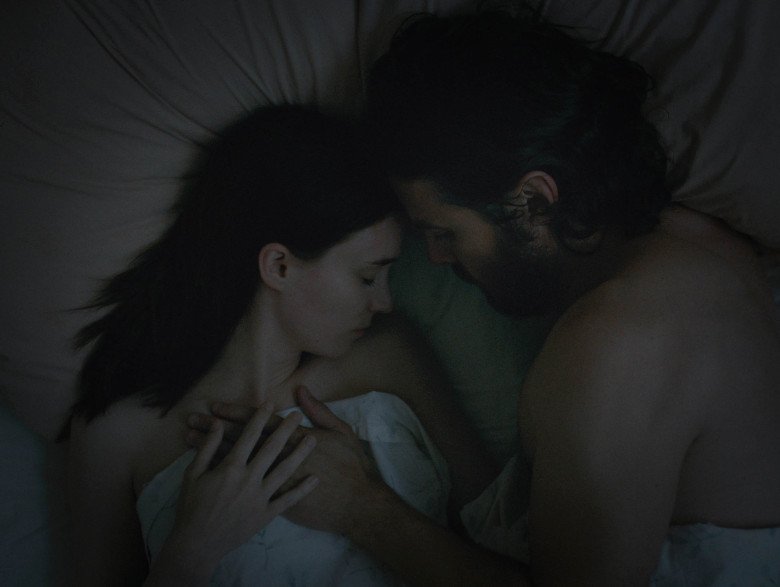There’s nothing remotely spooky about David Lowery’s A Ghost Story, but then it isn’t meant to scare so much as haunt. A reunion with his Ain’t Them Bodies Saints stars Rooney Mara and Casey Affleck, the film is a melancholy, sombre piece about death and the connection that remains long after we are gone. It’s a bold, bravura effort from Lowery for which he is to be commended, but the interminable pace and crushing desolation will be enough to make anyone want to pass on to the afterlife.
Mara and Affleck play an unnamed couple on the verge of a big decision. She wishes to move out of their non-descript, lonely one-story home to someplace more active. He kinda likes it there and wants to stay. He can’t really explain it other than to say, “History”, when asked about his affinity for the bland building. At this point there’s very little haunting going on, other than the sudden crash of piano notes in the middle of the night. Soon after comes a shocking death, that of the man, in a car accident presented without flair of any kind. No crashing windows, no screeching tires, nothing. Just death.

Something you ought to know about A Ghost Story, other than that Lowery lets each scene linger on for far too long, is that the titular ghost is a literal white sheet with two holes for eyes. Like a kid at Halloween. It’s silly at first, when the man’s body rises up from the morgue. But it starts to have a mesmerising effect as it makes way back to the home he felt such a strong connection to. There he watches the woman try to deal with her grief. If this becomes known as the “Rooney Mara eats pie” movie it’s for one particular mind-numbing sequence in which we watch her eat pie for about 10 straight minutes. The camera sits static and uninterrupted, while the ghost is in the corner observing. Next to me, an audience member visibly grew frustrated, not buying into Lowery’s attempt to show one way in which we grieve, by passing the time in any way that removes the pain. I get what he’s aiming for; often in that kind of despair we do things mindlessly, but that can be expressed in half the time, I think.

The film begins to lose focus once the woman leaves the picture and others we are less acquainted with move in. A Latino family experiences the ghost going poltergeist and throwing around dishes. A wildly overlong sequence involves a random party at the house with one drunken attendee babbling on about the cosmos. It doesn’t work mainly because the movie is largely dialogue-free and unhurried, while this totally isn’t. Lowery’s confusing depiction of time’s passing is deliberate to capture how the ghost has become unmoored from physical form and human constructs. Hours, minutes, days, these things come to mean nothing to the ghost, but they will most assuredly mean something to you as the film drags from one morose scene to the next. As Lowery takes the ghost further into the future and back again, we lose the sense of its isolation and sadness at the complete lack of human connection.
A Ghost Story isn’t the kind of movie that most people will walk away from loving. I certainly didn’t. It will likely be the most divisive movie at Sundance, perhaps this year’s Swiss Army Man. But there will be a number of genre fans who will love it for Lowery’s willingness to push the narrative envelope, even if this ghost story could do with more meat on its bones.
This review was first published on Punch Drunk Critics
★★½
Author: Travis Hopson
Travis Hopson is an independent film critic who writes on Punch Drunk Critics.


